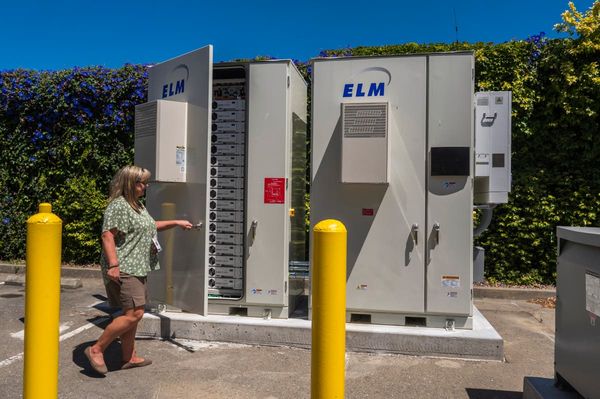
Energy Minister Chris Bowen’s commitment this week to expand the capacity investment scheme and underwrite up to 32 gigawatts of dispatchable and variable capacity is timely, and not merely because it was obvious that the government’s emissions abatement targets were becoming increasingly implausible.
It’s also clear how deeply committed fossil-fuel companies are to the status quo and how little commitment they have to energy transition.
A report released this morning by the International Energy Agency (IEA) looks at how the oil and gas sectors are positioned in relation to the need for policy and investments settings required to limit global emissions to Paris Agreement levels. The IEA speaks with authority on fossil-fuel sectors — it has traditionally been an international advocate for them. But the world’s worst climate criminals will find little to like in the detailed report, which shows:
- Fossil-fuel companies account for only 1% of clean energy investment around the world, and just four companies provide the bulk of that investment: “The oil and gas industry invested around US$20 billion in clean energy in 2022, some 2.5% of its total capital spending.”
- Most oil and gas output comes from companies with no commitment of any kind to reducing the emissions produced in their own operations: “The production, transport and processing of oil and gas results in just under 15% of global energy-related greenhouse gas emissions. This is a huge amount, equivalent to all energy-related greenhouse gas emissions from the United States.” These emissions need to be reduced by 60% by 2030.
- The fossil-fuel sector is investing double what is needed to meet declining oil and gas demand — US$800 billion a year: “No new long lead-time conventional oil and gas projects are required. Some existing production would even need to be shut in.”
- Accordingly, “Producers need to explain how any new resource developments are viable within a global pathway to net zero emissions by 2050 and be transparent about how they plan to avoid pushing this goal out of reach.”
The report also shows the IEA is more sceptical about carbon capture and storage (CCS), which is has previously described as essential to reach net zero by 2050 — a position it continues to adhere to. However, it notes that CCS is not commercially viable.
Apart from using captured CO2 to pump more oil out of oil wells — hardly conducive to emissions abatement — “The business case for [CCS] to reduce CO2 emissions depends largely on government policies. To date, incentives have generally been insufficient for investors to take on projects …” Moreover, CCS can’t be a tool to maintain the status quo, which is exactly what fossil-fuel companies that advocate for CCS want it to be:
It is not a way to retain the status quo. If oil and natural gas consumption were to evolve as projected under today’s policy settings, this would require an inconceivable 32 billion tonnes of carbon captured for utilisation or storage by 2050, including 23 billion tonnes via direct air capture to limit the temperature rise to 1.5 degrees Celsius. The necessary carbon capture technologies would require 26,000 terawatt hours of electricity generation to operate in 2050, which is more than global electricity demand in 2022.
With even a CCS champion such as the IEA cautioning against the fossil-fuel industry relying on it, the ongoing failure of major CCS projects takes on starker prominence. Chevron’s Gorgon project in Western Australia — the largest CCS project in the world — continues to operate at a small fraction of its promised performance and any substantial improvement looks further away than ever, while other fossil-fuel companies walk away from expensive CCS projects.
What’s clear from the IEA report is that fossil-fuel industry wants, and is continuing to invest for, a climate status quo in which the world is tipped into a climate disaster far above the Paris Agreement temperature goals. It continues to overinvest in fossil fuels, explore and open up oil and gas fields when they aren’t needed (and governments — such as the Australian government — continue to encourage and incentivise them to do so). Meanwhile they refuse to invest in, and deploy their skills in, renewable energy.
Shorter of a carbon price that makes fossil-fuel producers pay, bringing more government money into the transition, as Bowen proposes, is the only way to ensure the investment needed.
Will the energy industry listen? Readers, we want to hear from you — especially while our comments are closed due to our website upgrade. Send us your thoughts on this article to letters@crikey.com.au. Please include your full name to be considered for publication. We reserve the right to edit for length and clarity.







